Sounding the Body Electric: A Conversation
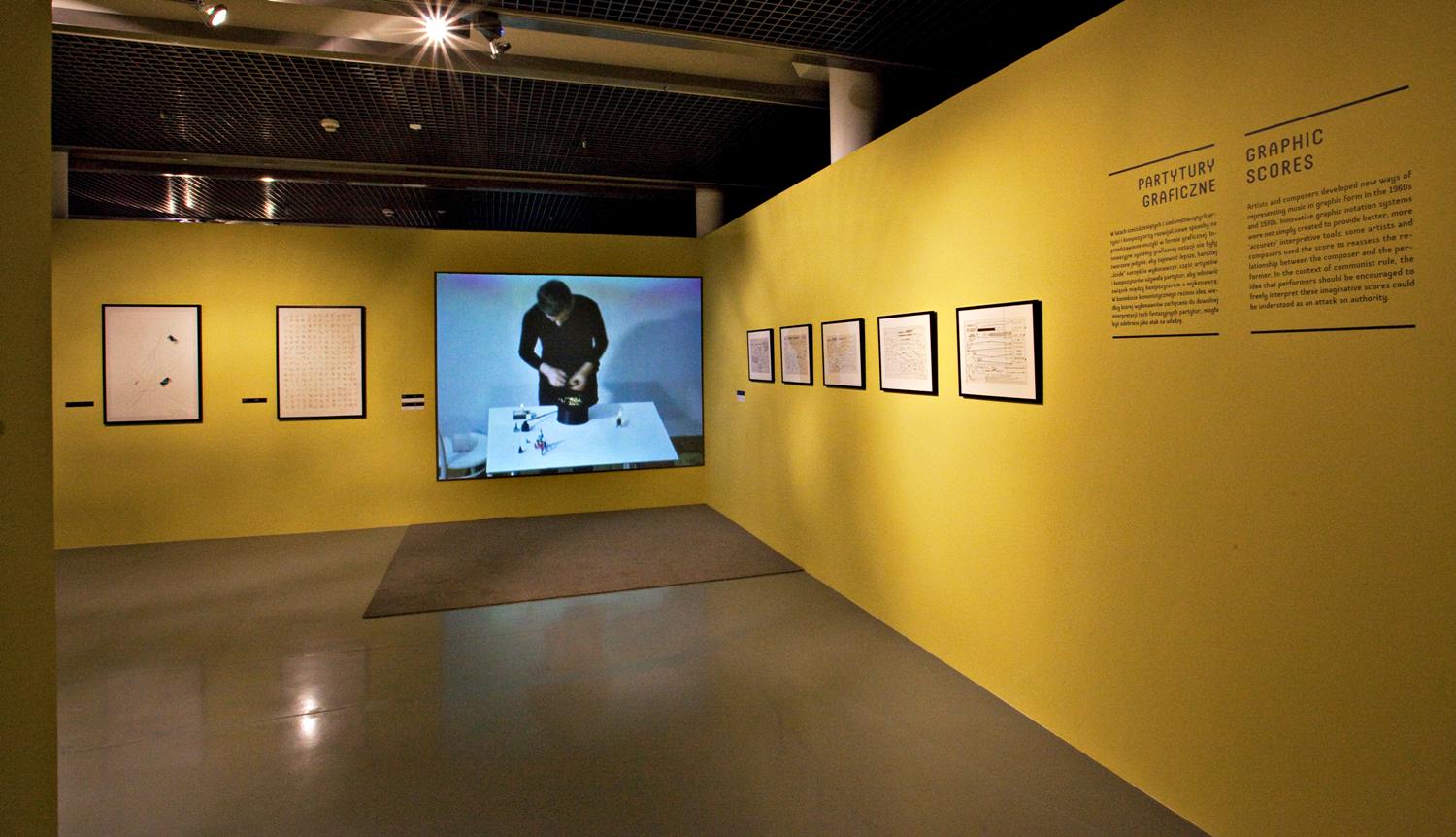
From May 25–August 19, 2012, an exhibition titled Sounding the Body Electric, Experiments in Art and Music in Eastern Europe, 1957–1984, at the Muzeum Sztuki in ?ód? explored the relations of the visual arts and experimental music. The exhibit featured graphic scores, installations, artists’ films and documents of happenings produced across Eastern Europe during the "thaw years" and after. The starting point of the exhibition is the Experimental Studio of Polish Radio founded in Warsaw in 1957 by Józef Patkowski. It was not only a symbol of the change in attitude of the Communist authorities toward electro-acoustic music, but also an incubator for cooperation between visual artists and composers. A series of recordings of compositions first made in the Experimental Studio of Polish Radio was recently issued by Bó?t Records.
From May 25–August 19, 2012, an exhibition titled Sounding the Body Electric, Experiments in Art and Music in Eastern Europe, 1957–1984, at the Muzeum Sztuki in ?ód?, explored the relations of the visual arts and experimental music. The exhibit featured graphic scores, installations, artists’ films and documents of happenings produced across Eastern Europe during the "thaw years" and after. The starting point of the exhibition is the Experimental Studio of Polish Radio founded in Warsaw in 1957 by Józef Patkowski. It was not only a symbol of the change in attitude of the Communist authorities toward electro-acoustic music, but also an incubator for cooperation between visual artists and composers. A series of recordings of compositions first made in the Experimental Studio of Polish Radio was recently issued by Bó?t Records.
In early June, music critic and founder of Bó?t Records Micha? Libera joined exhibition curators David Crowley and Daniel Muzyczuk to discuss the the show’s themes and reflect on the potential and the limits of its reconstruction.
Daniel Muzyczuk: When we were selecting works for the exhibition, we were faced with the lack of some of the most significant pieces of art – either objects that did not exist any more or performances that had not been recorded. The solution was to reconstruct the works that we had in mind. One is a sound installation titled Spatial-Musical Composition by Teresa Kelm, Zygmunt Krauze and Henryk Morel first realized in Galeria Wspó?czesna [in Warsaw] in 1968. It comprises six booths equipped with a source of sound and light. Users were able to control the sounds that reached them by moving freely between the spaces. In this way they built their own version of the composition with tools offered by the artists. The other was Just Transistor Radios, a performance from Warsaw in 1969 by Krzysztof Wodiczko and Szabolcs Esztényi. Following simple instructions, a group of performers simultaneously tuned, adjusted the volume and shook portable radio receivers. These two works formed a kind of firm backbone for the general themes of the show.
The real question is: how can one reconstruct these works when the available materials are quite different, or the radio waves are filled with really different sounds today? I think that legitimacy is achieved by having the actual artists involved in the process of remaking the work even though their attitudes are, of course, quite different now. And there are challenges of interpretation, too. So to tell this story we have to think about the effect of setting a piece from a different time in our context today. It’s a historical show. It tries to take you back.
David Crowley: I think that the two major reconstructions in the exhibition present different intellectual challenges. Take the Spatial-Musical Composition by Kelm and Krauze working with sculptor Henryk Morel. This piece was originally made in 1968, and it’s based on an idealistic belief that our experiences can be universal ones. The artists involved believed in a kind of universal body, that one could walk through the installation and that every experience of this sounding space was equally valuable, equally creative. You enter the space and produce a piece of music by the movement of your body. So the logic of making it today is the logic of the original project. Your experience of the space in 2012 is as valid as it would have been in 1968.
But the universal body does not exist for Wodiczko and Esztényi in the same way. The original performance of Just Transistor Radios took place in a specific location with specific people: skilled musicians who were given a score and conducted a musical interpretation of that composition with radios. So when we chose to recreate this piece for the show in ?ód?, we had to capture some of the same qualities and conditions.
DM: Yes, it was remade in Radio ?ód?. The setting somehow captures the 1960s atmosphere because the studio was built at that time and has not been modernized much since then. But, on the other hand, the sound quality is quite different. We had a conversation with both Esztényi and Wodiczko about whether we should add the sound of the jamming of Radio Free Europe. In the end, a decision has to be made whether to make a perfect reconstruction of what originally happened or to act in accordance with the core idea of the piece. And we chose the second approach.
DC: The reconstruction features the radio sounds that were being broadcast on the airwaves on the day [of the new performance]. I think this gives the piece a kind of currency today. It’s quite unexpected to hear a piece of contemporary dance music suddenly in the film documenting the 2012 performance. This, perhaps, also underlines the difference between then and now.
Micha? Libera: How do you feel about the change of the political context for these pieces? Your comments point to the political and critical character of the use of radio in the People’s Republic [of Poland]. How do you approach this context now?
DC: This is done through captions and also by placing works of art in the company of other critical musical and artistic interventions of the period. Wodiczko and Esztényi’s Just Transistor Radios is placed opposite a work by Vitaly Komar and Alexander Melamid titled Music Writing: Passport (from Codes series) from 1976. This was a commentary made in 1975 on the way in which these Russian artists had been refused the opportunity to travel to the United States. They took the text of the internal passport from the Soviet Union and translated it into a piece of music. This was then played by artists and musicians around the world at the very moment when they were to travel. This music was encrypted with the bureaucratic and hypocritical language of the Soviet state.
When you place the Wodiczko and Esztényi piece in this company, they form a critical commentary on the notion of freedom that runs throughout the exhibition. In the early sections, where the focus is on the late 1950s and 1960s, there are works which express rather euphoric and idealistic views of freedom. Kelm, Krauze and Morel’s installation is a case in point. By contrast, the final parts of the show take on a rather darker tone.
ML: What I understand from what you’re saying is that you didn’t try to reveal the critical aspects of these works today but rather tried to reconstruct their original intellectual context. Do you think that the political character of these works can only be found in the early 1970s when they were made or do you think they still carry some kind of critical character, which can be tapped into now?
DC: I think Wodiczko and Esztényi’s piece had its greatest potency in its original moment just after the suppression of the Prague Spring, which was itself a trigger for a new burst of radio jamming across the Soviet Bloc. But radio today in Poland is by no means a neutral medium. So it is impossible not to find a kind of a contemporary context for this work.
But one of the aims of our exhibition was to show works that have high intellectual value and coherence. Ten or fifteen years ago there was a kind of prevailing rhetoric that said there was almost nothing of value that could be extracted from the period of Communist rule unless, perhaps, it took the form of heroic dissent. Yet as we did more and more research, we found a kind of extraordinary vitality in the intellectual, artistic and cultural life of the 1960s and 1970s across the Bloc. The exhibition features works from Czechoslovakia, Poland, Hungary, Yugoslavia and the Soviet Union. In particular, it tells a rich story about the ways in which the visual arts and various forms of music interacted in the period.
ML: That was something that was absolutely amazing to me when I saw the show. It takes this history out of the hands of musicologists and music historians. What we knew about the sound of the 1960s was defined by a list of compositions, at best. Sometimes a composer had not been identified as the author of a particular film’s soundtrack, and perhaps that’s why people believe that the soundtracks were somehow born elsewhere and definitely not in Poland. It almost seems that we have no tradition of this in Poland. And that’s something, I guess, this exhibition is bringing into view.
DM: But this is a job that you’ve being doing too, Micha?. What drove you to engage with the Experimental Studio of Polish Radio? What did you want to find there and what, in the end, did you find?
ML: I think that my approach is pretty different from yours. In 2007 I was struck by the fact that there was no real celebration of the fiftieth anniversary of the founding of the Experimental Studio, and I was supposing that Polish Radio had no plans to release the recordings made there. When I proposed some kind of a small event, I faced a kind of wall from the Polish Radio. So I thought that–paradoxically and ironically–maybe it would be easier for musicians to play the pieces live on instruments than to get copyright clearance to play the original recordings. This turned out to be true. It was nothing but a joke, but when I saw them performing the pieces I thought there’s much more to this idea, and I eventually became a collaborator with Polish Radio. In the end they let me research the archives. I was never really interested in the historical context of the pieces but rather in trying to shed new light on them from our perspective. The very basic idea of my archival work has been to reissue the original recordings because I think it’s still a scandal that they were not available for forty or fifty years. But what’s definitely more important to me is to make an inquiry into electronic music after, let’s say, 100 years from its beginnings, to ask: Where did it lead us? What were the initial constraints, and what are the constraints at the moment? What are the possibilities now, and what were they fifty years agowhen the Experimental Studio was established?
DC: The Experimental Studio of Polish Radio is a really extraordinary historical object. When it opened in 1957, it was effectively funded by the Communist state and yet it seems to have offered composers a great deal of creative freedom. The achievements of the composers and engineers who worked there are really remarkable in terms of the history of experimental music. So why has it been overlooked and somehow forgotten?
ML: I think there are many reasons. First of all, during the 1970s and 1980s the publishing policy was to create a large archive of the pieces that could be broadcast on the radio and remain under the full control of the Radio (kept as an exclusive precious jewel). Then, in the last twenty-five years, the situation of the music market changed: it became easy to set up a label. The Internet made music easily accessible and impossible to control. I still think that the archive is very badly managed until now. That is why I would say it was possible to accelerate the process of publishing the archives only by people loosely associated with the Radio. Everybody knew about the Studio, but I think very few knew the recordings, and so the recordings we have reissued have had a very warm welcome from the audience and the critics. But I don’t think that we’ve managed to stimulate much debate on the role of experimental or electronic music.
DM: The history of the Experimental Studio is revealing because the authorities seem to have been very enthusiastic about experimental music. It could be performed in festivals, etc. to show that "we’re modern." On the other hand, the attitude toward the visual arts was very different. We know that after the "thaw," abstract art, at least in Poland, was largely accepted by the authorities because it suggested freedom of artistic expression. A clear parallel can be drawn with highly abstract musique concrète or serialism. This kind of creativity seemed indifferent to ideology or perhaps even empty itself. But around the middle of the 1960s–with the first happenings and rising political awareness, as well as the entrance of art into the public domain–it seems possible to draw some distinctions between art and music. Experimental music remains fixed in this indifferent field where it seems to be harmless whereas the visual arts start to attract suspicion.
DC: It seems to be an interesting paradox because if you survey the Eastern Bloc, you can see a new infrastructure being built after the Stalin years. Experimental recording studios were established in Warsaw, in Moscow, in Pilsen, in Brno and in Budapest. Each seems to have had access to high-quality magnetic tape recording machines, often manufactured in West Germany or the Netherlands, as well as homegrown synthesizers and modulators. This seems to be a relatively significant investment on the part of the state. But what were these studios producing? Often, difficult forms of experimental music. So you have to ask the question–what benefit did they bring to the state?
After Stalinism, after the terror, Communist states across the Bloc announced: "we will repair socialism with science," and so on. These were the fanfares of the "Scientific-Technological Revolution." The experimental studios were the product and the beneficiaries of this rhetoric. At the same time, some artists and composers were keenly interested in exploring what it meant to be experimental and modern. They were able to adapt the state rhetoric of experiment to their own purposes. Technology–perhaps unexpectedly–was associated with freedom, at least for a number of years. I think an important question is when that faith broke down.
ML: I don’t think that it was futurism which lay behind the Experimental Studio. It is best understood as abstractionism that was just very well directed by the state; and that, too, started to change in the late 1960s and early 1970s. If you follow the history of the Experimental Studio in Poland you see that at the beginning a lot of super serial works by W?odzimierz Koto?ski and Andrzej Dobrowolski were created there. Then, in the late 1960s [Eugeniusz] Rudnik started to do his less abstract collages. By the early 1970s live electronics are being introduced in Poland and people are starting to work outside of the Experimental Studio.
DM: What was the relationship between the Experimental Studio of Polish Radio and forms of live performance?
ML: 1964 was a key year. That’s when the first recordings of live electronics that I know of were made. They were made by Hugh Davies assisted by Bohdan Mazurek, Eugeniusz Rudnik and John Tilbury. I think this is one of the first electronic performances recorded in the studio. This was developed in the late 1960s by the new generation like Elzbieta Sikora and Krzysztof Knittel. It’s also a period when people who are not dedicated to the studio enter. They were composers who come there in the day to record one or two pieces and play in something like rock ‘n’ roll bands in the evening.
DC: In our research, we were quite interested in the moment when rock music entered the scene, but we did not cross that line in the exhibition. There could perhaps be another project exploring the intersection of art, electronics and rock music in Eastern Europe in the 1970s that could also span the region.
DM: If we were to focus on Poland, for example, we would not be able to trace strong connections between rock and electroacoustic music like those in Western Europe. Grupa w sk?adzie [consisting of Milo Kurtis, Jacek Malicki, Andrzej Kasprzyk, Witold Popiel i Andrzej Turczynowicz] is maybe the best example of another experimental current, that of intuitive music performed live in a manner like free improv bands such as AMM. They grew out of psychedelic rock. Their performances with artists like KwieKulik melted down the boundaries of art and music. They also played during the performances of Pawe? Freisler.
DC: Another notable fusion was the way in which composers used new visual languages and systems of graphic notation to direct musicians.
ML: Apparently the director of the studio Józef Patkowski was required to supply a written score of the music and theoretical explanation of a piece when he delivered it to the archives of the radio. Without it, a piece could not be registered in the archives. And that’s why the graphic scores were prepared by the composers. I think that the best example is AELA by W?odzimierz Koto?ski: it’s a word notation, just a couple of passages explaining what is and what is not determined in the piece. I think that was a kind of ironic commentary on this policy.
DC: The story of Patkowski fulfilling bureaucratic ends by registering the music with an authentic score offers one kind of logic for the visuality of experimental music. At the other end of the spectrum was artist Milan Adam?iak, a Slovak composer and artist much influenced by John Cage. He met Cage in Czechoslovakia in the late 1960s and, stimulated by the encounter, he produced graphic scores to achieve chance elements. One graphic score takes the form of a cube covered with calligraphic gestures. It was thrown like a dice across the floor. This is clearly in the spirit of Cage, but it has a specifically Eastern European dimension. A score that does not limit the range of musical possibilities, but instead releases the performer, has a kind of special resonance in the late 1960s because of the way in which cultural life was subject to state command.
ML: At the beginning of our conversation, Daniel mentioned working with artists and composers to recreate works from the 1960s. Many of the compositions that interest me most were recorded by experimental musicians forty or fifty years ago who, it seems, are actually extremely conservative today. Many are now working against experimentation and for preserving their works as they are.
DC: You’re suggesting that now this generation of composers are against experimentation because they want to preserve their works?
ML: Sure. If you think about their working methods, many worked with "found" materials, often gathering sounds from the world or radio. You can easily call it collage or remix or other terms that are perhaps closer to my generation. But they hate these notions. In fact, they now use the arguments that were used against them in the 1960s. Perhaps in psychological terms, this is not too difficult to understand: they were neglected for forty years and now someone finally is reviving their work but with little regard for historical truth. So I can understand that they’re a little bit frustrated, but it is also a sign of the times that experimental music has become classical music on all possible levels, such as authorship, composition/performance issues, originality, position in the music hierarchy, market, etc.
DC: Do you think this particular anxiety has to do with the very ephemeral form of music? Because we can now turn music into digital files, they become material and can be easily cut and pasted. That amplifies the anxiety that these musicians and the composers feel?
ML: I think in a way, yes, because perhaps they’re afraid of the fact that anyone can now reuse their works. When, in the 1960s, they were the elite in the Experimental Studio, only they had the means and know-how to do this. Now almost anyone can do it on a laptop. And the people who celebrate their work feel the only way of paying respectful tribute is to arrest it. But I wouldn’t be worried about it. Good stuff will always remain while the bad will disappear quickly.


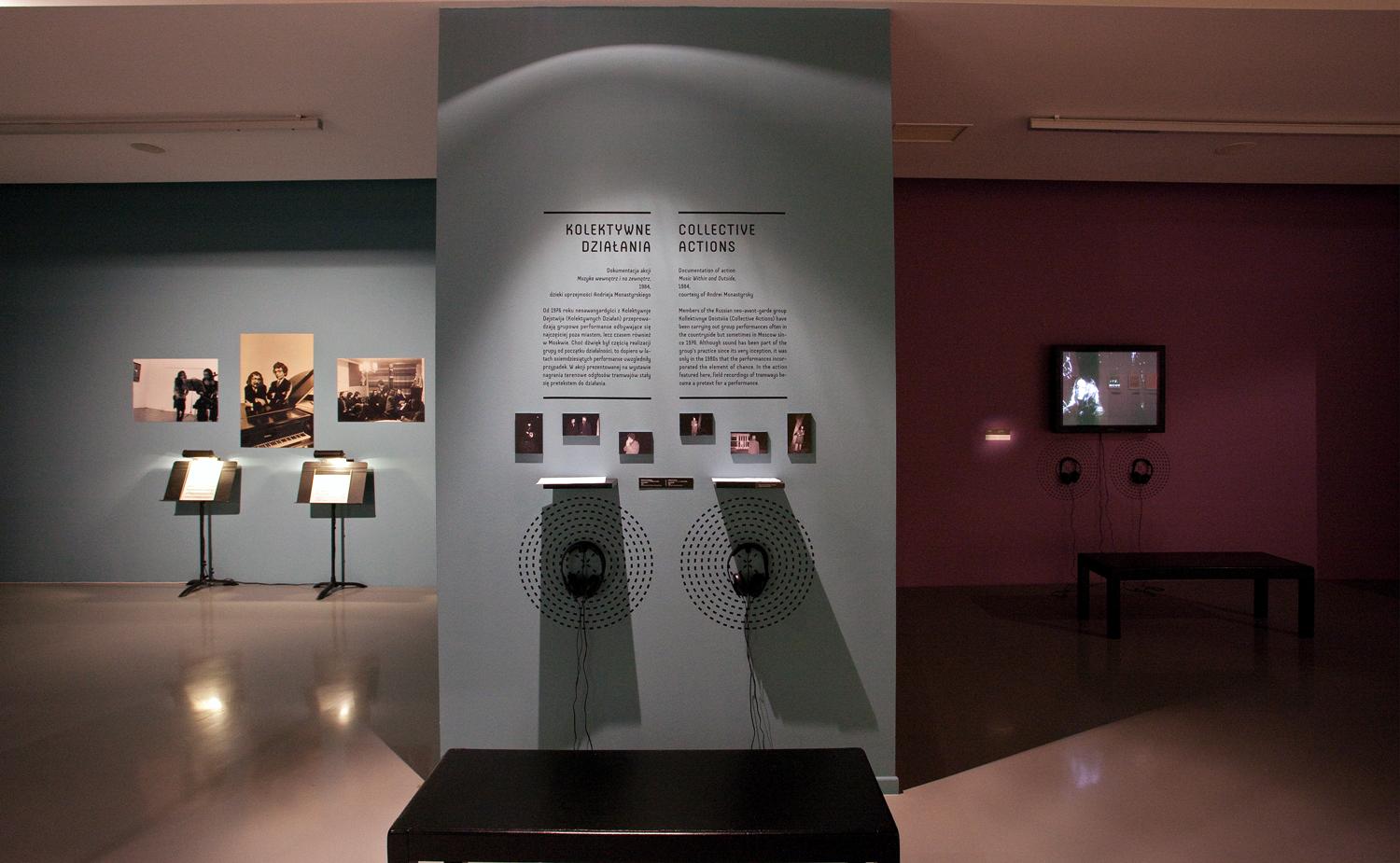

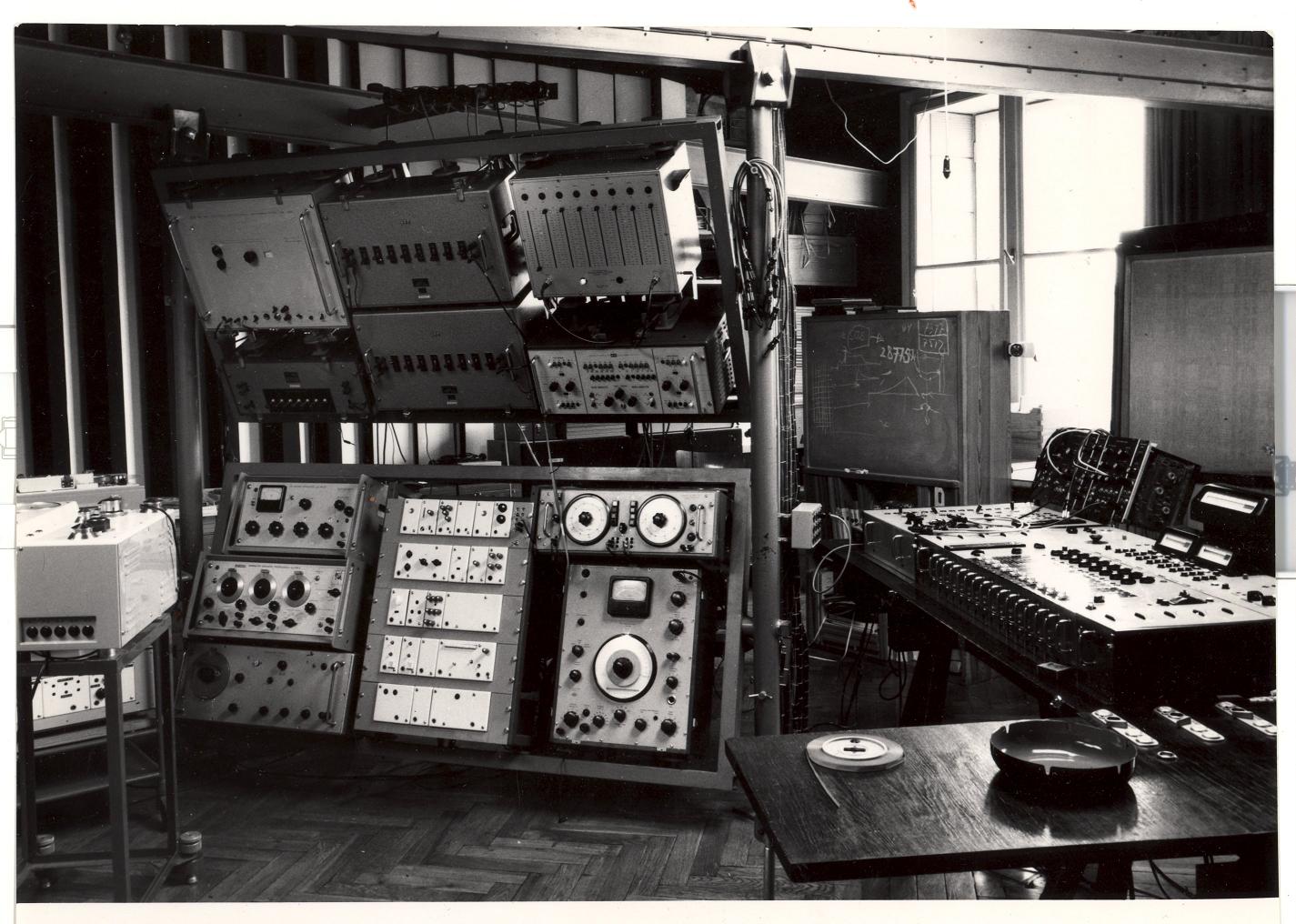
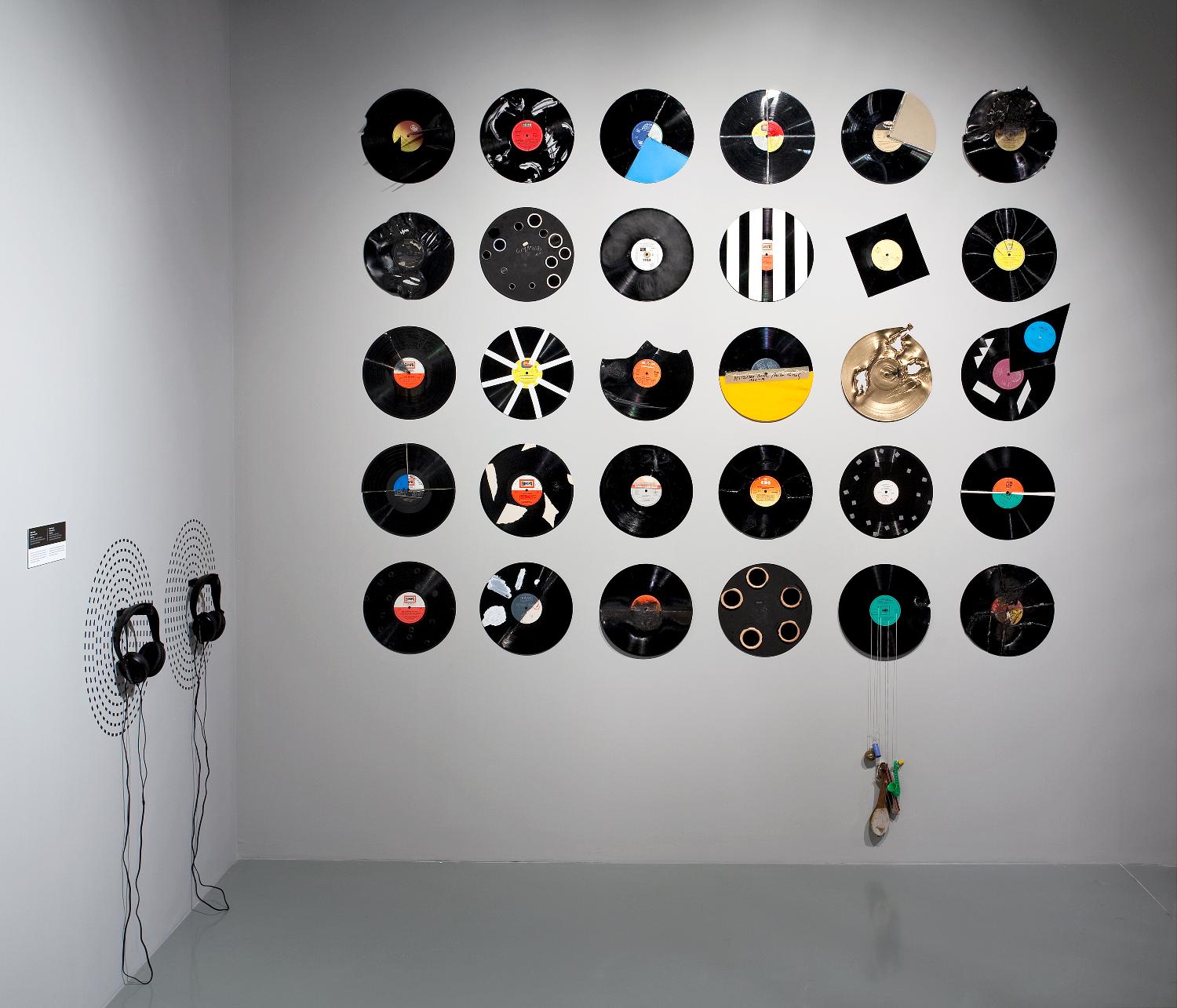
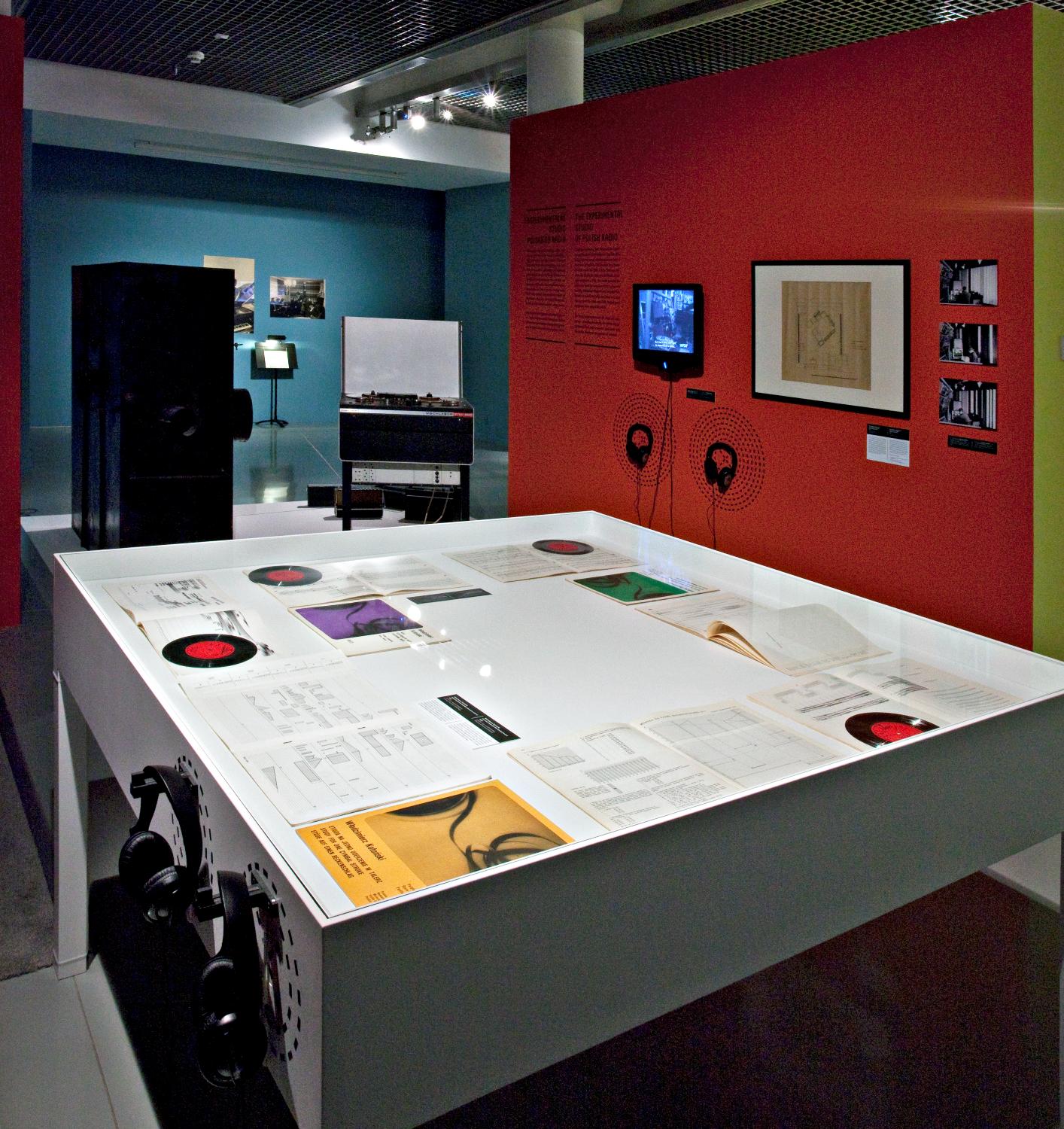
 David Crowley runs the Critical Writing in Art and Design MA program at the Royal College of Art in London. He is a writer and curator with an interest in the art and design of Eastern Europe under Communist rule.
David Crowley runs the Critical Writing in Art and Design MA program at the Royal College of Art in London. He is a writer and curator with an interest in the art and design of Eastern Europe under Communist rule.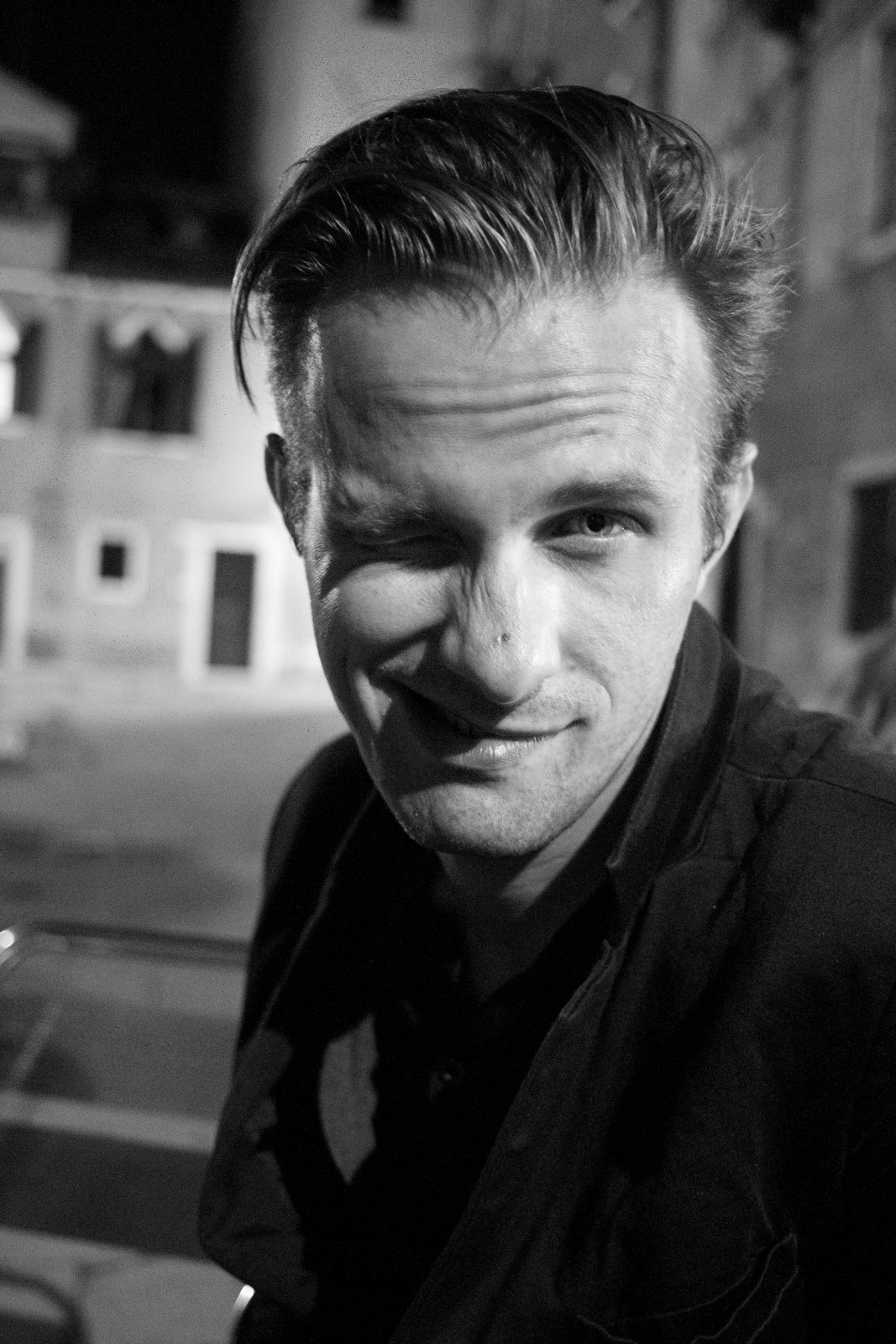 Micha? Libera is a freelance curator, producer and music theorist. He is the editor of the music series for the s?owo/obraz terytoria publishing house, the producer of the conceptual pop CD sublabel Populista and the coproducer of the Polish Experimental Studio CD series. He was the curator of the Polish Pavilion at the Venice Biennale of Architecture in 2012.
Micha? Libera is a freelance curator, producer and music theorist. He is the editor of the music series for the s?owo/obraz terytoria publishing house, the producer of the conceptual pop CD sublabel Populista and the coproducer of the Polish Experimental Studio CD series. He was the curator of the Polish Pavilion at the Venice Biennale of Architecture in 2012. Daniel Muzyczuk is a curator at the Museum of Art in ?ód?. He curated, among other projects, the shows: "Long Gone" Susan Philipsz (2009), Gone to Croatan (2008-2011), Melancholy of Resistance: Works from the Collection of the Museum of Contemporary Art Antwerp (2010), Views, Deutsche Bank Award 2011 and Sounding the Body Electric (2012).
Daniel Muzyczuk is a curator at the Museum of Art in ?ód?. He curated, among other projects, the shows: "Long Gone" Susan Philipsz (2009), Gone to Croatan (2008-2011), Melancholy of Resistance: Works from the Collection of the Museum of Contemporary Art Antwerp (2010), Views, Deutsche Bank Award 2011 and Sounding the Body Electric (2012).

